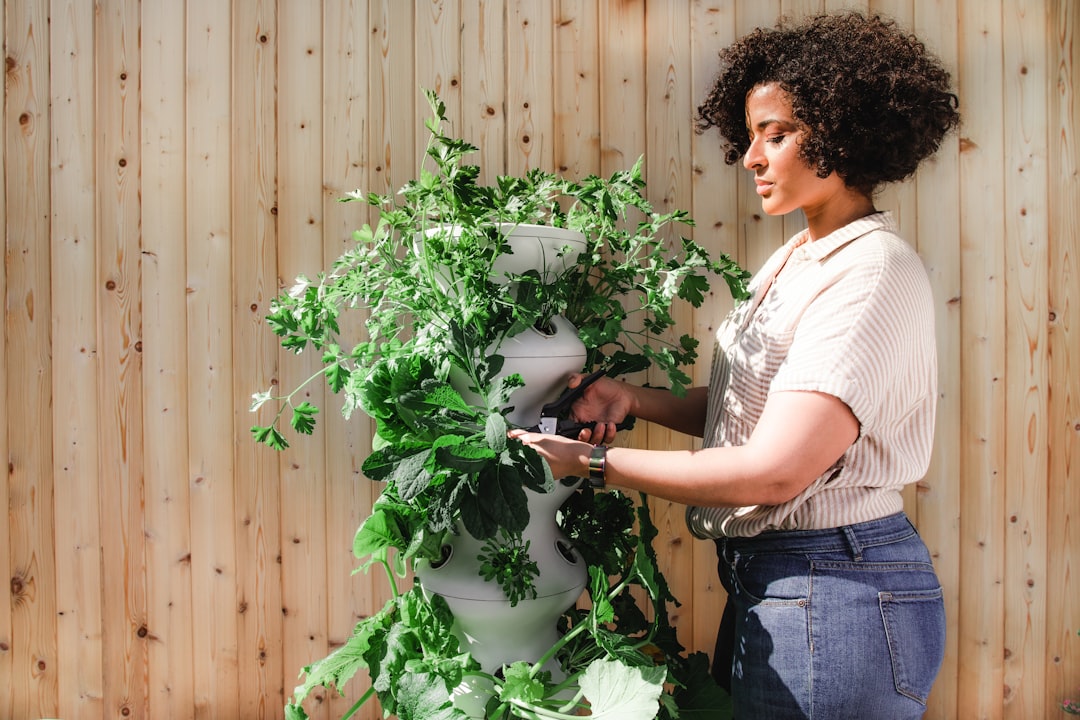Vertical gardening offers an innovative way to maximize space while enjoying the benefits of homegrown plants. However, success depends on selecting the right supplies, including containers, supports, and growing media. Whether you’re cultivating herbs on a small balcony or managing an elaborate green wall, having the right materials ensures healthy plant growth and long-term sustainability. In this guide, we’ll explore the essential supplies needed for a thriving vertical garden.
1. Containers: Choosing the Right Planters
Containers are a fundamental component of vertical gardening, as they hold the plants and soil while allowing proper drainage. The choice of container depends on the type of plants you want to grow and the available space.
Types of Containers for Vertical Gardening:
-
Hanging Baskets: Ideal for trailing plants like strawberries, petunias, and ivy.
-
Wall-Mounted Planters: Great for herbs, small flowers, and succulents.
-
Stackable Planters: Excellent for compact spaces and growing multiple plant varieties.
-
Pallet Gardens: A cost-effective and DIY-friendly solution for growing herbs and leafy greens.
-
Pocket Planters (Fabric or Felt): Allow for air pruning and good drainage, suitable for both indoor and outdoor use.
-
Hydroponic Towers: Ideal for soilless gardening, maximizing yield in minimal space.
Key Considerations When Selecting Containers:
-
Material: Choose breathable materials like fabric or porous ceramic for better aeration, or durable plastic for longevity.
-
Drainage: Ensure containers have sufficient drainage holes to prevent root rot.
-
Size: Select appropriately sized containers for the plant’s root system.
-
Mobility: Opt for lightweight or hanging options if you need flexibility in placement.
2. Supports: Providing Stability and Structure
Since vertical gardens grow upwards, sturdy supports are crucial for keeping plants secure and promoting healthy growth.
Types of Vertical Garden Supports:
-
Trellises and Arches: Ideal for climbing plants like tomatoes, beans, and cucumbers.
-
Wire Mesh and Grids: Great for wall-mounted gardens or espalier techniques.
-
Garden Stakes and Poles: Provide extra support for taller plants like peppers and eggplants.
-
Hanging Hooks and Brackets: Useful for suspending baskets and planters.
-
PVC or Metal Frames: Common in hydroponic or aeroponic systems.
-
Recycled Wooden Pallets: A budget-friendly DIY option for structured vertical gardening.
Key Considerations When Selecting Supports:
-
Durability: Ensure supports can withstand wind and plant weight.
-
Flexibility: Adjustable or modular designs allow for garden expansion.
-
Compatibility: Supports should match the container and plant type.
3. Growing Media: The Foundation for Healthy Plants
Unlike traditional gardens, vertical gardening requires lightweight yet nutrient-rich growing media that provide excellent drainage and aeration.
Best Growing Media for Vertical Gardens:
-
Potting Mix: A lightweight and well-draining blend suitable for most container plants.
-
Coconut Coir: Retains moisture while providing excellent aeration.
-
Perlite and Vermiculite: Improve drainage and aeration while preventing compaction.
-
Peat Moss: Helps retain moisture and nutrients but should be used sustainably.
-
Hydroponic Substrates (Clay Pellets, Rockwool): Ideal for soilless gardening systems.
-
Compost-Enriched Soil: Adds essential nutrients for plant health.
Key Considerations for Growing Media:
-
Weight: Choose lightweight materials to avoid overloading vertical structures.
-
Water Retention: Ensure a balance between moisture retention and drainage.
-
Nutrient Content: Opt for media rich in organic matter to support plant growth.
-
Aeration: Prevents root suffocation and promotes healthy development.
Additional Supplies for Vertical Gardening Success
Beyond containers, supports, and growing media, a few additional supplies can enhance your gardening experience.
-
Self-Watering Systems: Help maintain consistent moisture levels, especially for high-rise gardens.
-
Fertilizers: Organic or liquid fertilizers provide essential nutrients for sustained growth.
-
Irrigation Systems: Drip irrigation or misting systems ensure efficient watering.
-
Mulch: Helps retain moisture and suppress weeds in vertical planters.
-
Pest Control Measures: Natural solutions like neem oil or insecticidal soap prevent plant damage.
-
LED Grow Lights: Useful for indoor vertical gardens with limited sunlight.
Conclusion
A successful vertical garden starts with selecting the right supplies. By investing in the right containers, sturdy supports, and quality growing media, you create a strong foundation for healthy plants. Whether you're a beginner or an experienced gardener, these essentials will help you maximize space, boost productivity, and create a stunning vertical green space. Get started today and enjoy the benefits of a thriving vertical garden!

Comments
No comments yet. Be the first to comment!
You must be logged in to comment. Login